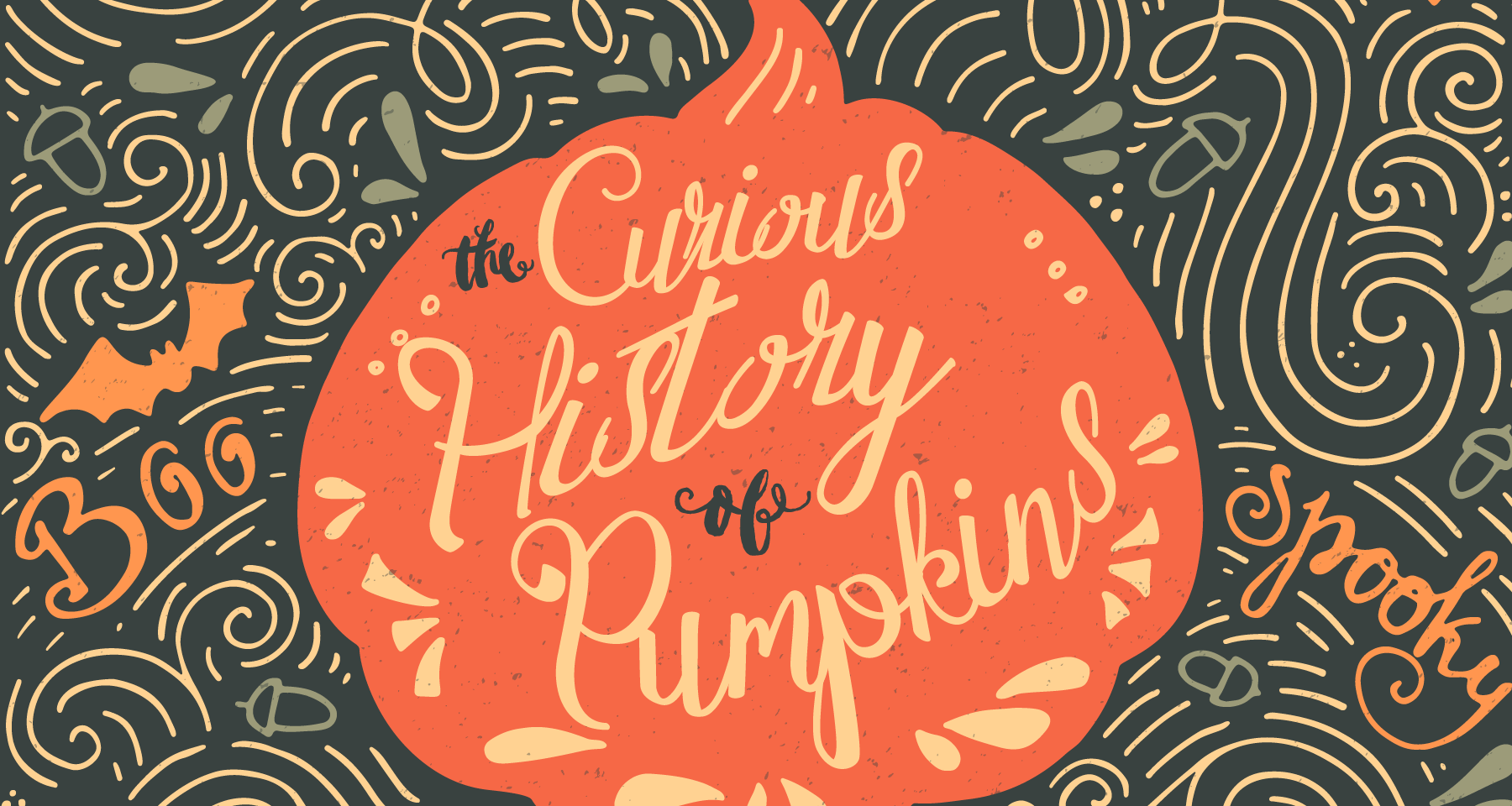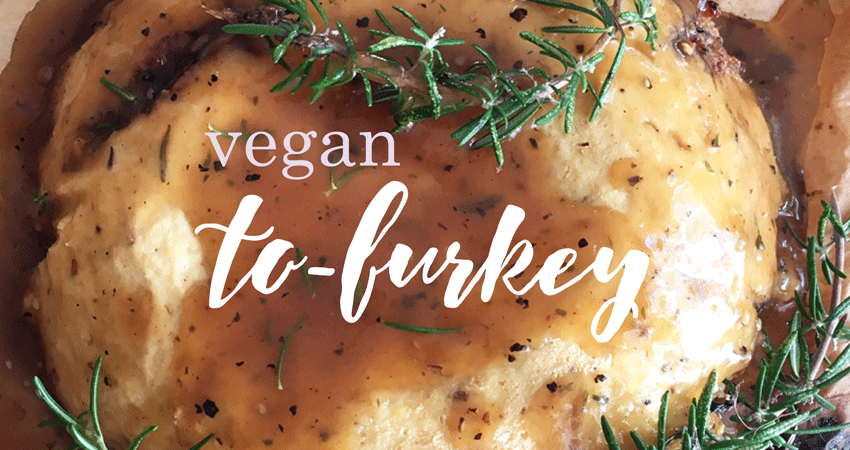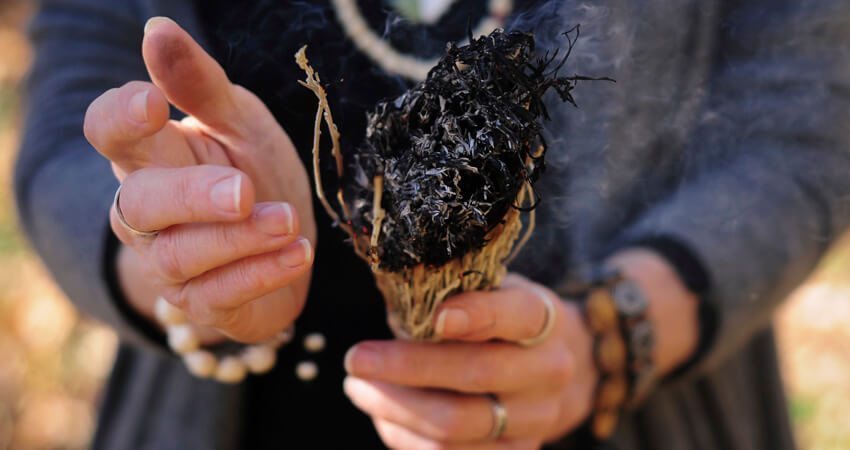
The Curious History of Pumpkins (+ Recipes!)
Categories: Excerpt Food & Nutrition
A few years ago, we published The Curious History of Vegetables—one part folklore, one part anthropology, and 100% love letter to the secret life of food. In a global deep-dive into our relationships with veggies, Wolf Storl explores the complex, multilayered meanings we’ve ascribed to everything from the elusive artichoke to the humble potato. Since the beginning of time, humans have imbued inanimate objects with meaning, and it should come as no surprise that our food has more symbolic layers—political, social, religious, economic, moral, even emotional—than might first meet the eye. In The Curious History of Vegetables, you’ll learn who used tomatoes to spice up—as the author calls it—“human goulash”; why rowdy radishes had to be consecrated by priests on February 22nd; and which vegetables were used during the medieval period to get in—or, should the need arise, quickly out of—the mood. In today’s Halloween sneak peek, we’re taking a look at the trials and tales of—what else—the pumpkin.

Pumpkin, Squash
Cucurbita pepo
The opulent pumpkin plant, with its big, rough leaves and tendrils, yellow gold blossoms, and big, round, orange fruits is a newcomer to European gardens. Columbus was the first European to see a pumpkin field on December 3, 1492, on Cuba.
He knew at once that it was a kind of “Indian” Cucurbita, or Curbita, because that was what the learned ones of those days called the melons (Cucumis) and gourds (Lagenaria) of the Old World. In northern Europe, besides cucumbers and poisonous bryony—which was used in magic rituals—not much attention was paid to this plant family, if for no other reason than that they need a lot of warmth and are very sensitive to frost. Wonderfully sweet watermelons were known since ancient times in Mediterranean countries as common refreshment—like ice cream nowadays—and gourds, with their hard, dry shells, were also used by the Romans to make containers, drinking vessels, and rattles, but otherwise, squash wasn’t a very big deal. This American pumpkin, however, was of a completely different caliber.
The pumpkin was a mainstay in the cuisines of indigenous North and South Americans and is one of the oldest cultivated plants. For them, at least in Columbus’s time, it was regarded as an incarnated goddess who had descended from the heavens, along with corn and beans. Cave findings of pumpkin seeds in Oaxaca, Mexico, and other places are dated to some 10,000 years B.C.E. These were wild plants, small and bitter, gathered for their seeds, which had valuable protein and oils. In the course of the following thousands of years, Native Americans were able to cultivate hundreds of squash plants of different sizes, shapes, and colors—crookneck squash, flying saucer squash, pumpkin, chayote squash, and banana squash, and many others that had delicate, easily digestible flesh.
In the Americas of today, gardeners still produce a striking variety of this plant family, all referred to as squash. Because the white settlers had no word for this unusual vegetable, they took over the Algonquian word askutasquash (“eaten raw”), which they truncated to “squash.” In Britain, where “squash” refers to either a pressed citrus fruit juice or a game similar to tennis, the vegetable is called “vegetable marrow.” Americans distinguish between winter and summer squash; the former (C. maxima, C. moschata) kinds have a round stem and are eaten when fully ripe; the latter (C. pepo) have a square stem and are usually eaten before they are ripe. Among these various summer squash, zucchini is one of the all time favorites. It is extremely productive. It blossoms continually and each plant continually produces long, green, cucumber-like fruits. No matter how many various recipes there are for the wonderful vegetable, a single family cannot use all that is produced. (One solution is to try some of the blossoms fried in batter.)
As it was for the Native Americans, the pumpkin also has cult status in modern America. Not only was pumpkin pie used to celebrate harvest time celebrations, but also the pumpkin has become the present day symbol for Halloween. Now, the pumpkin reminds us of the transition between the rapidly changing seasons. Whether it is ingested or used for decoration, the history of the pumpkin dates back hundreds of years.
Since the 16th century, the giant pumpkin grows in the gardens and fields of Europe, but it’s taken Europeans a long time to warm up to eating it. In France it is mainly used as cattle fodder. The huge berry—botanically speaking, it is a “berry”—inspired fantasy imaginations in Europe. Charles Perrault incorporated it into his version of Cinderella by having it turn into Cinderella’s carriage. And even modern-day mythology finds inspiration from pumpkins in relation to otherworldliness. The extraterrestrials that are supposed to have been stranded in the Mojave Desert, the “galactic boat people,” are generally called “pumpkin heads” because of the shape of their heads (which is, of course, also a term for a nitwit). Moreover, the pumpkin has probably found its greatest place as a symbol for Halloween.
Halloween was already celebrated in ancient times in Northern Europe. The Celts knew it as the time of year (Samain—when the moon is full in November) when the spirits of the dead temporarily leave their resting places and roam around the countryside. In order to receive their blessings and protect one’s family from possible spooks and pranks, people would put out some food and set out a light, usually near the main door of their house. The Celts hollowed out a big turnip and carved a face into it, using it as a lantern. In America, their descendants who had immigrated to the New World replaced the turnip with a pumpkin, and the festival also became more secular. In the wake of global Americanization, pumpkins were also used in Europe for fall festivities.
Some of these festivals introduced the pumpkin as a “moon” plant, which related the pumpkin to the dead. The old European Christian belief was that the souls of the dead go first to the moon on their way to higher spiritual planes. Mexican Indians also made offerings of cooked pumpkin to their dead and set out hollowed out pumpkins with pointed teeth and scary faces carved into them. But it wasn’t just in the Western Hemisphere where the pumpkin held special status.
As pumpkin and various other squash vegetables came to be known in the Old World, each region developed its own relationship to the quaint plants. For the Chinese, the pumpkin became a symbol for the primeval oneness of yin/yang; for the Africans it became a symbol for the world egg containing the seeds of all human beings. Because the pumpkin is chock-full of seeds, for the Turks it symbolizes the female ovary and protects from the “evil eye;” In Cairo, pumpkins are hung up to protect from the evil eye.
In rural South Africa, pumpkins also became part of the folk- and healing lore. The Zulus and other Southern African peoples cook the yellow blossoms to a kind of relish that’s eaten with corn mush. Roasted seeds are a popular snack. The herbal healers, the shamans of the Zulus, who are called njangas, cook the leaves and put them on the chest as hot compresses for pneumonia; they give a tea made of the roots for rheumatic pains, and give ground seeds to get rid of band worms.
The seeds were also used for greater purposes in Europe. The country folk transferred a sympathetic magic onto the pumpkin that applied to other big vegetables: the seeds should be sown on Pentecost when the church bells ring so that “they will grow to be as big as church bells.” The seeds should be carried in a big bucket or a big basket. In Breslau, they asked a big woman with a big bottom to sit on the seeds so that the pumpkins would grow as big as her hindquarters. One should tell a big lie while sowing—so they will grow to be big. In Lausanne, Switzerland, the farmers brought the seeds to church to be blessed on Annunciation Day. The pumpkins should then swell up like the virgin’s belly. Country lore says: “St. Stanislaus (May 7th) Day makes pumpkins big.” Or: “St. Urban (May 25th) brings a big turban.” “If one sows the seeds before sunrise on St. Walpurga’s Day (April 30th) or May 1st—a festival exactly diametrically opposed to the fall festival of Samain (Halloween)—then they will thrive as fast as witches fly (they are known to be out flying around during Walpurgis night, the night from April 30th to May 1st). In Brittany, they are sown on Good Friday so that they will “resurrect” in big style.
Garden Tips:
Soil: The pumpkin is a frost-sensitive heavy feeder that grows best in sandy loam that has been well supplied with rotted manure. A mid-season application of compost tea will spur growth. Any kind of squash plants also thrive well when planted into an old compost pile.
Cultivation: One can soak the seeds in milk until they are well swollen before sowing. The seeds are planted into raised mounds after there is no more danger of frost. In the middle of the growing period liquid compost will spur growth. If grown with nasturtiums and angel’s trumpet, they thrive very well and will not get aphids. (Larry Berger)
For the Native Americans, pumpkins were not only a source of nourishment but also used for healing. The Mayans used the juice in salves for burns. The Aztecs made a medicine out of pumpkin seeds in combination with onions and wormseed (Chenopodium ambrosioides) for round worms and band worms, and they made a medicine for bladder and kidney diseases out of the pulp. The Catawba chewed the seeds for kidney problems; the Cherokee and Menominee used them as a diuretic and to cleanse the urine for bedwetting, dropsy, burning sensations while urinating, and cramps in the urinary organs.
European folk medicine is quite similar: Pumpkin is a diet food for stomach troubles, and kidney/bladder ailments; fresh pumpkin pulp is applied to furuncles, abscesses, varicose veins, and cankerous sores. It was traditionally believed to heal not only for physical reasons but also because of “the pure radiance of life energy.” Pumpkin seed oil heals wounds, especially burns, and cracked skin. Pumpkin seeds are still eaten nowadays to get rid of worms. To this effect about 300 grams (10 oz.) of pumpkin seeds are eaten; the worms do not die but they are paralyzed and after thirty minutes they can be excreted after taking ½ tablespoon of castor oil. Famous Pastor Kneipp prescribed this cure with the addition of drinking the seeds down with some vermouth tea. In the meantime research shows that the seeds help with benign swollen prostate gland; they contain delta-7 sterols, which resemble the male sex hormone, dihydrotestosterone, as well as vitamin E and selenium, which has an anti-inflammatory and antioxidant effect. Pumpkin seeds are also interesting for cancer research because they contain peponin, which is said to block the production of HIV-1 enzymes.
Enjoy a delicious pumpkin dish during this Halloween season!
Recipes:
Pumpkin Salad with Blueberry Sauce
- 3 tbsp. mayonnaise
- 1 tbsp. olive oil
- 1 tsp. honey
- 4 tbsp. blueberries
- 1 tbsp. apple vinegar
- A bit of freshly ground ginger
- Salt
- White pepper
- 1 c. grated pumpkin
- Endives
Mix mayonnaise, olive oil, honey, vinegar and blueberries. Season to taste with ginger, herb salt and pepper. Stir sauce into grated pumpkin and serve on endive boats.
Pumpkin with Yellow Boletus
- Scant ½ c. finely chopped onions
- 1 c. fresh yellow boletus, cut up
- 2 bay leaves
- 4 sage leaves
- 2 tbsp. olive oil or lemon olive oil
- 1 c. white wine
- 1 c. vegetable broth
- 1 c. (200 ml.) cream
- Hominy as needed
- Herb salt
- Scant 2 lbs. pumpkin, cubed
Fry onions and yellow boletus with bay leaves and sage leaves in olive oil and deglaze with white wine. Add vegetable broth and cream and bring to a boil, then add hominy to bind slightly. Add herb salt and let simmer for about twenty minutes. Add pumpkin and continue to simmer with a lid on for about five minutes.
Tip: Fine butter noodles go well with the soup.
Tags: Farming & Permaculture Herbalism Recipe Wolf Storl



